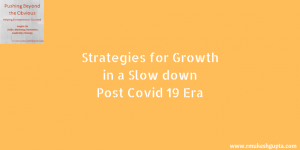
Beyond the good feelings and family gatherings during Thanksgiving week, it can also be a time to ponder the value of gratitude. For CEOs, that can mean taking the time to show true thanks for the employees around them, and offering gestures that show just how much they mean to the operation. Displays of gratitude don’t just need to be during the holidays, of course, but the spirit of the season may help to refocus on giving thanks.
Here are some tips and benefits of gratitude in the workplace.
Make it authentic
One trap that leaders can fall into is to offer generic praise, a “way to go” pat on the back that offers no specifics about what is good and why it should be applauded. That can then deflate those whose backs are being patted, because it shows that the boss perhaps isn’t paying close enough attention to the work being done, or doesn’t care enough to take a moment to express it properly. Ana Durtra examines this for Forbes, sharing a story of her daughter getting a thank you card from her job, but one that was impersonal and unsigned.
“Gratitude has to be authentic and heartfelt in order to be impactful,” she explains. “It can’t be an obligation or expressed because it is ‘the right thing to say.’ … My daughter was looking for the sincere, personal and authentic Thank You. But, what she received was one of many impersonal pieces of paper. Like the Thank You note my daughter received, canned gratitude is transparent and a waste of time. It cheapens the gesture and it doesn’t create any positive impact. In order to be able to express authentic gratitude, leaders have to truly feel it. In order to truly feel it, you have to be open to be grateful and take the time to pause and reflect about the things and people you are grateful for.”
Make time
CEOs may be in a constant go-go-go pace, one that prevents them from spending much quality time with employees. The longer that goes on, the more distance may be created between the corner office and the staff. CEOs that dedicate themselves to carving out time to personally interact with the staff may find themselves in a more harmonious — and successful — position. Marla Tabaka discusses this in a story for Inc.com, written by Kevin Daum.
“Nothing says ‘I appreciate you’ more than an investment of your time, especially because everyone knows how busy you are,” Tabaka explains. “I was blessed with an incredible mentor and boss during many of my years in corporate. Lisa made certain to spend time with me in and outside of the office on a regular basis. Knowing how much she believed in me inspired me to be at my best at all times. The tangible gifts I received from other peers and bosses are long forgotten, but Lisa’s gift of time will forever be remembered and valued.”
Make it part of the culture
A CEO with a good sense of gratitude can help to instill that within the workplace. By expressing thanks for the work and the success that it brings, business leaders can set the example for employees to follow. Dan Finnigan, CEO of Jobvite, writes about this for Inc.com, encouraging “a culture and cycle of gratitude, where people not only feel thankful for each other, but also continuously work to be the kind of productive employees for which others will be grateful.”
“I know that I’m incredibly thankful for my team,” he writes. “These are the folks who make me look good. They make me look smarter than I am, they’re good at things I’m not good at, and they’re extremely skilled at their professions, which in turn makes me better at my job. You know you’re doing something right as a company when your employees readily have each other’s backs. When they volunteer to pick up the slack, complete a project on the weekend, or even take an unplanned trip — all to help out a colleague.”
Motivational boosts
Business leaders and entrepreneurs may find that their sense of gratitude provides an additional source of inspiration to succeed. Brock Blake, CEO of Lendio, examines some of these benefits in a story for Forbes, writing, “Grateful entrepreneurs will work tirelessly to drive results.”
“If you’re an entrepreneur, you know that much of your success has come because of the help that you’ve received from others,” he explains. “That help may come in the form of an early investor/friend/family member that lent you the first $ 10,000 that you needed to get your idea off the ground. Or, perhaps it came from an associate that allowed you to have free office space for the first six months of existence. The grateful entrepreneur will recognize those acts of kindness and will work tirelessly to show your appreciation and/or reward those acts of service.”
Health benefits
Gratitude can do more than provide positive vibes. It can also be a boost to our health — and that can’t be a bad thing. In a story for WebMD, Elizabeth Heubeck describes some of these benefits, including helping us to manage stress. She quotes University of California-Davis psychology professor Robert Emmons: “Gratitude research is beginning to suggest that feelings of thankfulness have tremendous positive value in helping people cope with daily problems, especially stress.”
Also, grateful people — “those who perceive gratitude as a permanent trait rather than a temporary state of mind,” as Heubeck describes — can have an overall healthier lifestyle. “Grateful people take better care of themselves and engage in more protective health behaviors like regular exercise, a healthy diet, regular physical examinations,” Emmons said.
How to show gratitude
There are many ways a CEO can show that he or she appreciates the work and effort that goes on in the office. Here are two examples from Stacy Alcorn in a story for Entrepreneur.com:
- Appreciation events: It’s not necessary to become an event planner to pull this off, but the effort is what counts. “Throughout the year, we host parties for our team members,” Alcorn says. “The best ones include their spouses and children. This sends a message that we love not just the employees but their entire families for the contribution that they collectively make to our organization. It takes a village to run an awesome company. … Say thanks with a company outing, a party or a huge get-together that celebrates your people, their families and your organization.”
- Pay it forward: Kind acts of appreciation can inspire others. Alcorn, who owns a real estate firm, emphasizes helping the real estate agents to express their appreciation for clients. “For the past five years we have organized a Thanksgiving-time event with a pie giveaway for the agents,” she explains. “The company prints up individualized marketing materials for each agent, negotiates discounted pricing on pies from a local farm and then drops the desserts at each agent’s office for distribution two days before Thanksgiving. Make it very easy for your staffers [to] appreciate their clients — and extend the circle of gratitude way beyond the doors of the company.”
The hand-written note
This may be the simplest gesture, but one that makes a significant impact. A written note takes a little more time and thought than a dashed-off “Thanks!” email or a passing comment in the office. One notable example of this is Doug Conant, former CEO of Campbell Soup, who wrote thousands of thank-you notes during his time with the company.
Simple, but meaningful. Peter Economy discusses this in Daum’s story for Inc.com.
“In my experience, the most meaningful and effective way to show gratitude is to send a handwritten thank-you note,” he says. “Spoken and emailed thank-yous are relatively common, but it’s a rare leader or manager who actually takes the time to sit down and write a note of thanks to a member of his or her team, or to a valued client. People know that, and they value written thank-you notes far more than other forms of thanks — so much so that most display them proudly in their offices for all to see, often many years after they were received.”
Business & Finance Articles on Business 2 Community(86)









